Bartman
Defender of the Noob!
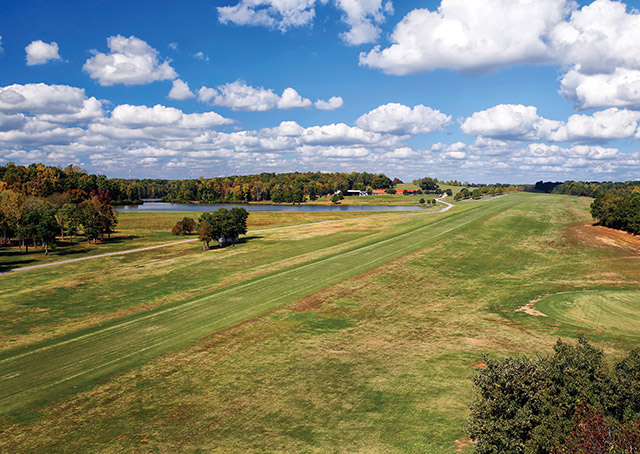
I just read this today, it's a great article on Pat Hartness, Triple Tree, and Joe Nall.
https://www.aopa.org/news-and-media/all-news/2016/march/pilot/f_never
February 4, 2016 By Julie Summers Walker
Finding the secret to happiness at a grass strip
Pat Hartness might be aviation’s Peter Pan. His “Lost Boys” have found their happy place at his playground, Triple Tree Aerodrome outside Greenville, South Carolina. They fly, they build things, they party, they laugh, they work hard, and they play hard. Don’t let the gray hair fool you.
The story begins. What would you do if life had been extraordinarily kind to you, had given you all the material things you’d ever wished for, and there was nothing you could ever want? Well, you’d set up a great playground for your friends, share the fun, and build up the economy of your little hometown, right?
That’s what “Mr. Pat” did—and is doing.
The Hartnesses were Pepsi-Cola in the South. Not only selling the products but the bottler, too—the inventor of a bottling system, to be exact. His dad offered him a little money upon graduation and Pat invested it in Pepsi, the “other” cola—Coke was king here then—so a little money went a long way. Then stores came along looking for a cheaper cola than Coke, and a small fortune was made. Add the ingenuity to improve on the packaging process, and an empire was built. Hartness International was sold several years ago for an undisclosed amount to Illinois Tool Works.
Hartness’s dad, Tom, was a big part of this success, and his mom was the first female certificated pilot in South Carolina. The family loved flying. Hartness built model aircraft and eventually started flying radio-controlled (RC) aircraft. At Furman University he met his best friend: Joseph T. Nall. Joe Nall was the former NTSB member who was killed as a passenger in a 1989 airplane crash in Caracas, Venezuela, and for whom the AOPA Air Safety Institute’s annual aviation safety report is named. Nall and Hartness flew radio-controlled aircraft together and started an RC fly-in at the Hartness property. That was in 1978. What is now Joe Nall Week at Triple Tree has grown from 1,700 attendees to more than 15,000; RC teams come from all over the world to participate.
The property. Hartness and his wife, Mary Lou, discovered what is now Triple Tree Aerodrome in 2000. It was her suggestion that it be named after the three large oak trees on the property. And it was a much better name than Kilgore, the plantation of which the property once was a part. Kilgore Aerodrome doesn’t work for an aviation Mecca.
Rob Traynham, Triple Tree’s volunteer communications coordinator, says that after Hartness International was sold, Pat took up moving dirt. “He just loves to move dirt,” Traynham jokes.
But there’s a lot of truth to that. Hartness says he moved more than “nine years” of dirt around to create the crown jewel of Triple Tree: a 7,000-foot-long, 400-foot-wide, flatter-than-a-pancake runway on which a jet can land. Its grass is Tifway 419 Bermuda—the kind you find on golf courses. Kids are known to spread out on the turf as if they are making snow angels; grown-ups want to do it, too.
In creating his aviation playground, Hartness was adamant that it serve two purposes: a great GA airport and a great RC airport. So there’s a special area for flying and viewing RC aircraft. There’s a 54-acre lake for seaplanes, and sand areas along the lake for RC seaplane operations. Joe Nall Week is held in May and the Triple Tree Fly-In in September.
Visitors and attendees to both events are treated to first-class amenities. There’s a well-appointed clubhouse—Pepsi products on tap. A Mediterranean-style patio with a pizza oven. An open-air bar and dance floor. Gazebos. RV hookups for every size. Six miles of walking trails. A full-service bathhouse replete with large shower stalls and granite countertops.
Hartness and his gang are the caretakers. The grass is mowed every 48 hours with a special mower the gang designed. Called Deere John, it’s a 36-foot-wide, tractor-pulled device with 12 10-horsepower rotary heads that can mow the giant runway in just a couple of passes.
Hartness bought a 1940s-era tower from nearby Donaldson Air Force Base for $100; he and the boys picked it up in pieces and restored it on the property. From its 60-foot height, set up on a hill, is the best view of this playground.
-
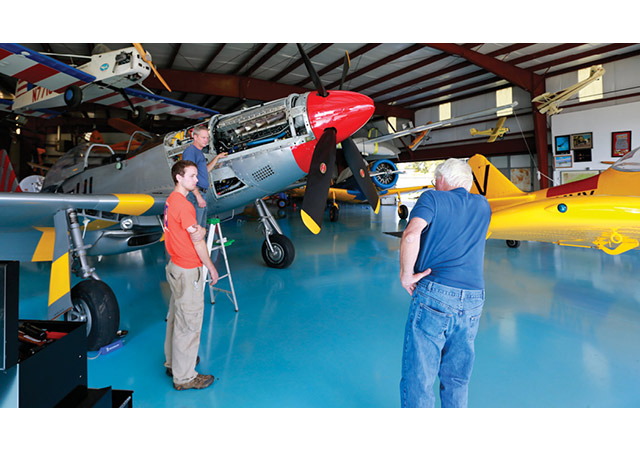
Mark Murphy (center) instructed five of the Triple Tree members in the TF–51 Mustang, all of whom are now checked out in the vintage aircraft.

Neverland Finding the secret to happiness at a grass strip Photography by Chris Rose
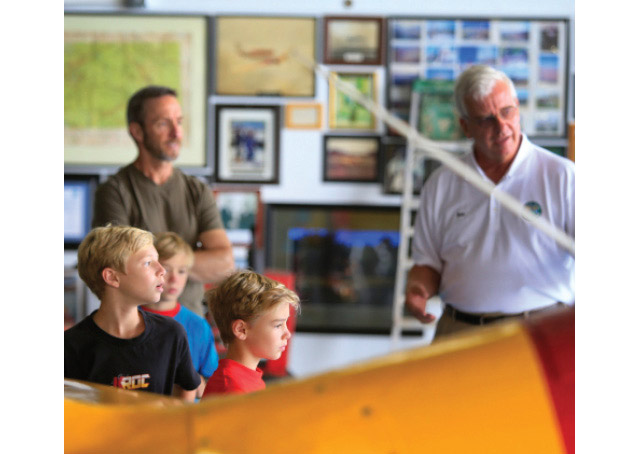
Rob Traynham talks to young visitors to Triple Tree Aerodrome.
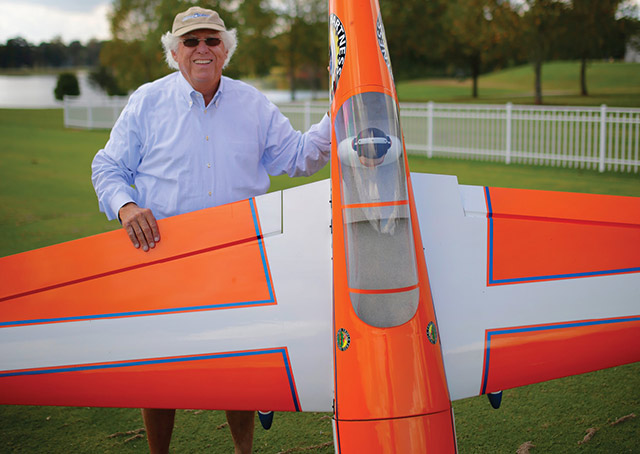
Pat Hartness with his eight-foot Sukhoi SU–26 radio-controlled aircraft. It has a 124-inch wingspan, weighs 37 pounds, and has a 150-cc engine.
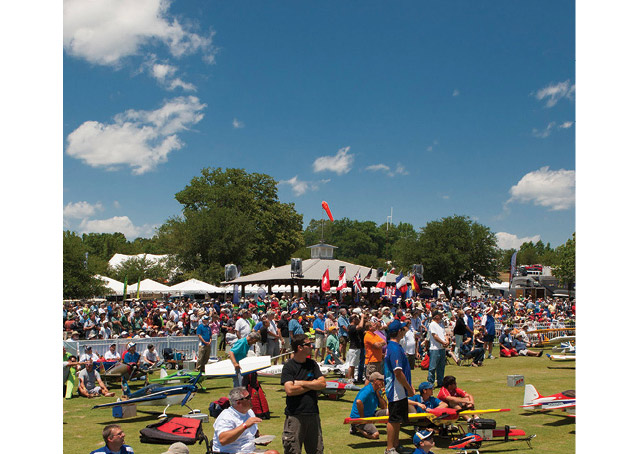
The Joe Nall RC event draws tens of thousands of visitors to Triple Tree.
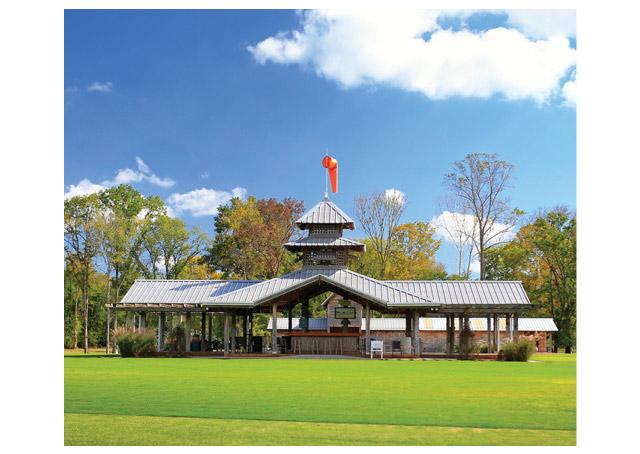
The 2,000-square-foot clubhouse has a full bar area and patio.
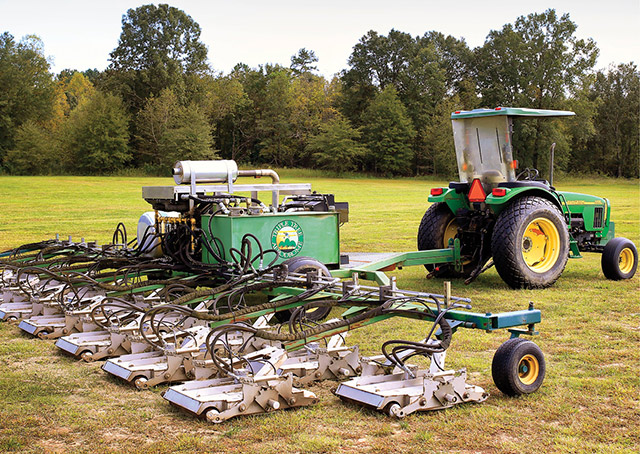
The lawn mower, designed especially for Triple Tree, has 18 independent floating decks for a width of 36 feet. Its 225-horsepower diesel engine drives six pumps, which turn the 18 hydraulic motors.
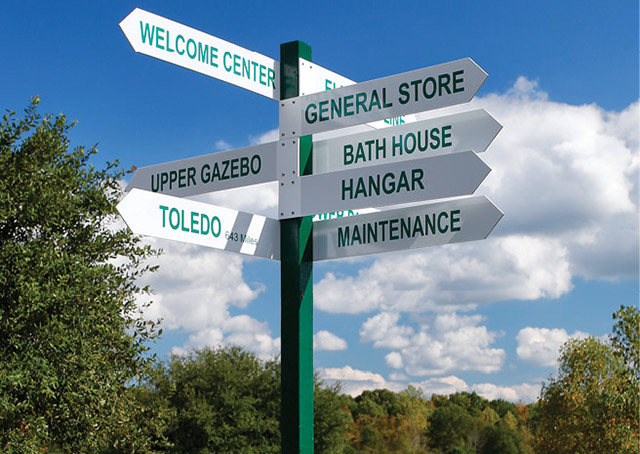
Mark Davidson designed the directional sign that pays homage to the television show "M*A*S*H" which also prominently features Toledo.
